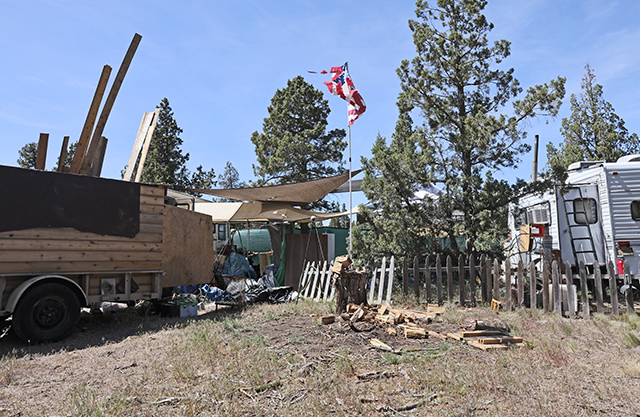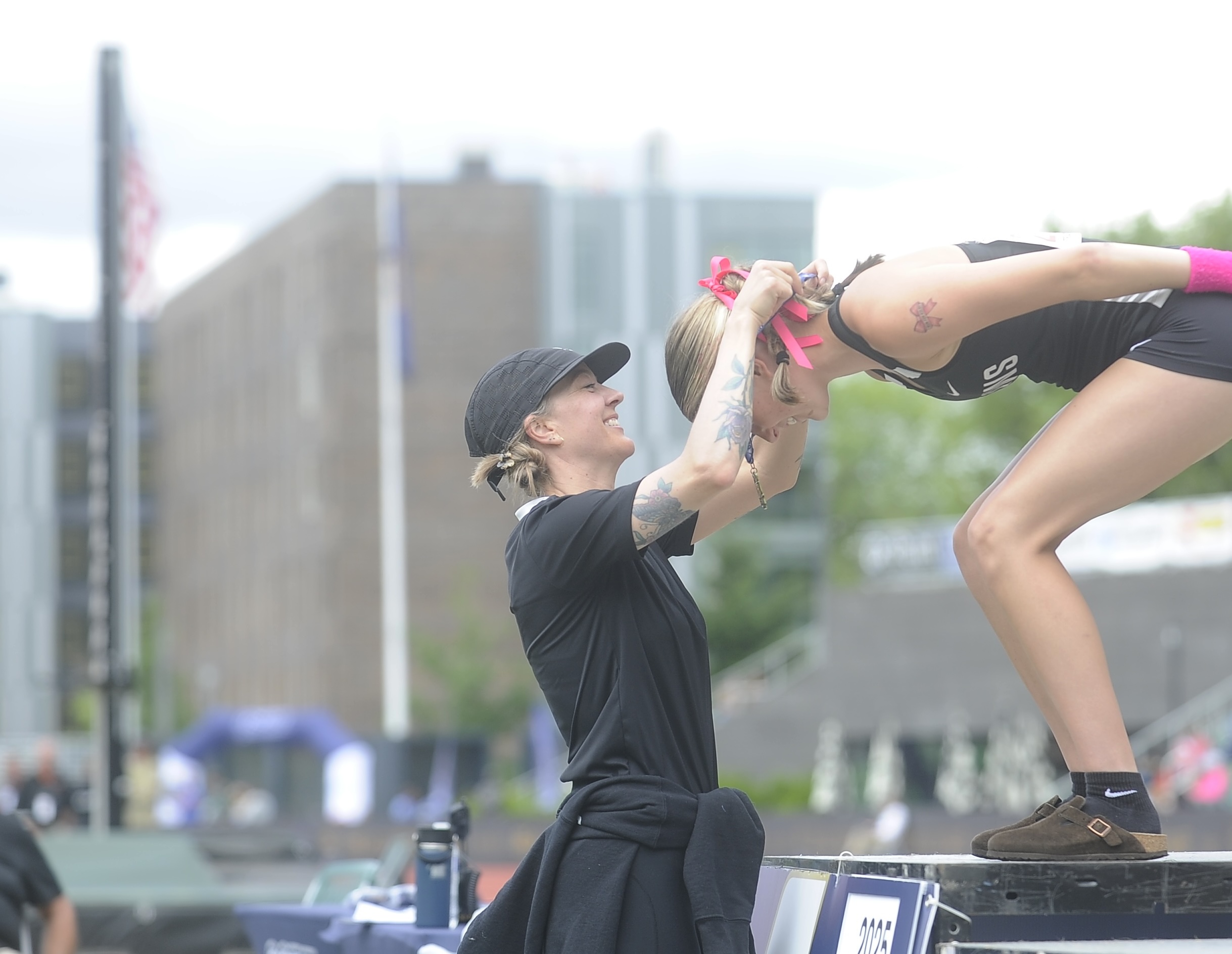Chasing Clearwater steelhead: Anglers find success on river in Idaho
Published 3:00 pm Tuesday, April 2, 2024

- Tilt Wing Mahogany Dun, courtesy Fin & Fire.
Michelle Peters jabbed a finger in Matt Thomas’s chest and said, “Tomorrow you’re catching a 17-niner.”
We were at a place called Brock’s Smirking Goat in Lewiston, Idaho, where the jazz was smooth and the old fashioned was served with dry ice under glass.
Jacquie the waitress, sold me on the steak bites and the salad, which she had never tried because, “I don’t eat what my food eats.” The salad was as good as advertised, and the chocolate cake too. But I kind of wished my friend Michelle had poked me in the chest and called a fish for me.
We had been on the river most of the day, side drifting corkies and yarn. The steelhead bite is akin to the sensation of pulling a rubber band and then you feel the head shake.
When it happened early on the first day, I thought, yeah, I still got it. And then the fish porpoised, and it was old bugle lips himself, a firm, strong, Clearwater sucker that blessed me with a long-line release. When it happened again, it really felt like a steelhead, but it was a bigger sucker.
Our guide, Travis Wendt from Reel Time Fishing, unhooked it and tried to get me to give it a smooch.
Soon after, a whitefish sipped Chip Carmichael’s bait and he fought to the net a very solid looking whitefish that was soon followed by another. And then Chip caught his steelhead, a gorgeous rainbow-striped Clearwater A-run pushing 8 pounds. Matt Thomas, owner of TS&S Subaru in Bend, and the Ford store in Madras, did not sulk, but he didn’t catch anything either. Nor did he get a bite. And I don’t believe I got another bite either. But we knew we’d get another chance.
It was a short night with smooth jazz and visions of suckers dancing in my head. We found our way down to the breakfast bar at the Hells Canyon Grand Hotel in Lewiston, took coffees to go and pointed back up the Clearwater to our rendezvous with our guide for Day Two, Gabe Julian. In Julian we found a kindred spirit, an enthusiast of the muscle car with 10 Mustangs on his resume including his current machine, an unrestored ‘68 Fastback with a 302 and 40,000 on the clock.
I checked the time. According to my calculations, the sweet spot in the fishery would be between 9:30 and 11:30 a.m. and we were early enough to get upstream of the biters.
Gabe had the rods rigged each with high-viz line and 42 inches of leader terminated at a 3.5 Mag Lips — blue, green or purple — and red Pro-Cured coon shrimp on the hooks.
He powered us into the current and pointed the nose of the jet boat upstream. We pulled beanies down over ears and leaned into the cold wind coming off the Bitterroot Mountains. Gabe cut the motor above a run called Hatchery Flats and we began to feed out line from the stern rods first, watching the line counters and then let out the forward rods. We’d have four baits working down into the prime water across from Crack Pipe, where several boats had anchored up close to the hatchery outflow. I think it was 8:48 a.m. when Chip’s rod buried. He waited until the fish had taken the bait solid and took the rod out of the holder while Matt and I gathered line as fast as we could get gear out of the water. A few minutes later Gabe got the net under a 6-pound hatchery buck Chip said he would keep for dinner.
Gabe relaxed a little bit after the first fish, but he said he had to make sure Mary Jane got in the game.
Mary Jane was a purple Mag Lip named after one of his clients, a real estate agent from Idaho Falls or somewhere, who had caught nine steelhead in one day on the same purple plug. He showed it to me, pointed at Matt’s side of the boat and said it would run that side. I took the plug in my hand. It was scarred from dozens of steelhead grabs. It’s funny how one plug in a box will outperform everything else made in the same factory, but man, it happens. And you want to protect a lure with that kind of history. I noted the line was frayed 3 inches up the leader and cut the line with my CRKT neck knife and retied it, checked the knot. Good to go.
Matt had stood up and moved away from his seat when that rod buried. The fish smoked downriver hard, burning line off the reel and then it turned and shook the hook out of its mouth. A big fish gone. I reeled in, and we checked the line and baited it again.
This time Matt stayed close to Mary Jane and when the next fish bit, it slammed the rod down hard.
Gabe pulled the boat sideways in the current and we drifted away from the other boats while Matt did battle with the biggest steelhead of his life. It stayed deep at first, but when we drifted into shallower water, we saw it flash and Gabe wasted no time getting the net under it.
Almost too big for the net, almost too far out, almost too much fish for Gabe to control. But he put his muscle against it and kept the fish from flopping out. And when the fish was in the boat, Gabe breathed, “I’d call that just a hair under 18 pounds.”
Yah, like a 17-niner.
Fly-tying Corner
Tie on a long, light leader and keep the shadow of the rod off the water. Don’t cast until you see trout sipping on the blue-winged brown-bodied mayflies. Trout may cruise along the bank to pick off the adults.
Watch for this hatch in April and May and again in the fall. Mahogany dun nymphs make a living in the riffles then migrate to slow-moving edges as they reach maturity. In the slack water near the shore, that’s where the action is. The Tilt Wing Mahogany Dun is also a good option during the March Brown hatch.
Tie the Tilt Wing Mahogany Dun with rust-brown thread on a No. 12-16 dry fly hook. For the tail, use dun hackle fibers. Wrap the body with a turkey biot tied in tip first. Build the thorax with darker brown dubbing. Tie in a deer hair wing post, trim as shown, then finish with a dun hackle wrapped parachute-style.






